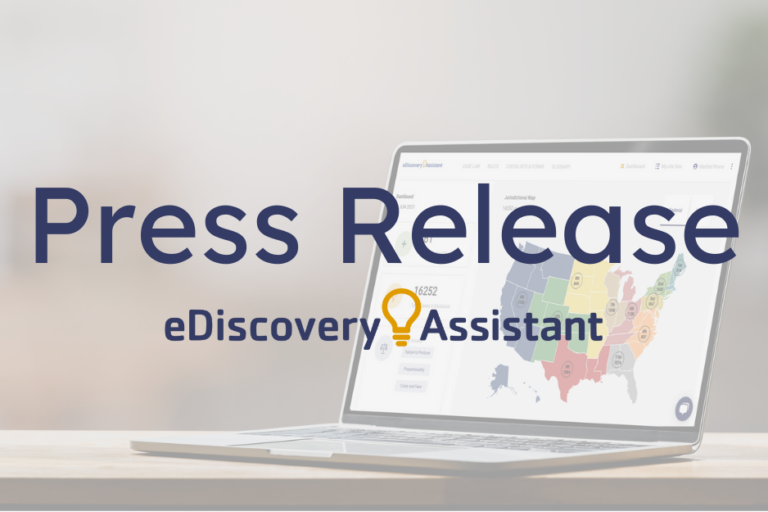Talk to colleagues about different strategies. Stay on top of new developments in technology.
Very little about eDiscovery ever goes as planned. We work on cases from millions of documents down to a single mobile device and everywhere in between, and in 15 years I can tell you that every single case has its own unique challenges.
Those challenges range from the technical — e.g., failure to collect metadata, corrupt files, matching up metadata to PDFs — to authentication and presentation — e.g., how to exhibit text messages from a forensic collection, to can you use screen captures from social media as evidence (yes, if everyone agrees) — to how am I going to deal with a database that all experts need to see that cannot be recreated outside the current system (that one was easy fortunately). The constant ever-evolving issues in eDiscovery require a thoughtful, creative approach that advances the case the fastest in the most economical manner.
Easier said than done, right? I feel your pain. Most of these challenges are just one small piece of the puzzle for a case, but how you handle them can have dramatic implications. The answer is to do what you get paid to do as a lawyer or legal support professional — think outside the box.
About what, you ask? There are two keys that I have found. First, keep the end goal in sight and constantly be making sure the goals aren’t changing. That means keeping an eye on the ever evolving litigation strategy and solving the problems as part of the bigger picture.
Your approach will depend on the case itself — is it litigation in federal or state court? Does your judge know eDiscovery principles or do you have to educate her? Is it ADR? If so, what is the format? What is your client’s goal? What is the other side’s goal? When the goals are diametrically opposed (as in many class actions), considering the other side’s approach and what they want to do can save your client a ton of money by non wasting efforts you might engage in where the two parties have the same volume and issues in discovery.
Then think about the ESI that presents the challenge. What is the value of the evidence that you are trying to figure out a solution for? That’s the standard cost/benefit analysis. Is there a way to agree with the other side or talk to the judge about a less cumbersome, less expensive approach given the proportionality considerations of the issue? You need to take all of these pieces into account and consider your approach.
The second key is to break out of just following the same rote process of decision making. Processes are great, and we need them in eDiscovery especially. But I see a lot of folks handling collection, email, and other common forms of ESI the same way every time because “that’s what they do.” I’m telling you to consider for every case whether the standard approach is the best approach for that case. I spoke recently with George Socha at the UF eDiscovery Law Conference about a unique challenge we have and his thought was worth sharing — it’s not about the tools you use, it’s about how you use them. Keep that in mind. The thought process is what’s key.
Let’s juxtapose two cases to give you a better idea of what I’m talking about. These two examples are almost the opposite ends of the spectrum in ediscovery world, just to paint you a pretty clear picture. In the first case, the DOJ has sent a CID (Civil Investigative Demand) to your client and one of the requests is communications between all personnel regarding pricing issues for the products your client sells. They suspect anti-competitive conduct. You are also aware that your client’s three competitors received similar CIDs. Ten years ago, we would have looked at email as the primary source of ESI for responding to this CID. Today? Text messaging and other forms of IM are going to be the go to source. But you have to figure out what the sources are, how to collect from them, how to figure out whether your client has an antitrust problem, and then you have to figure out how to deal with getting information from mobile devices for presentation to the DOJ within their requirements and their very short timeframe.
What’s your approach? Are you considering or asking potential custodians about whether they used non-sanctioned apps like What’s App or other ways to communicate? If so, how will you collect them and what will that data look like?
Now think about the disgruntled former employee discrimination case that your client just called about. The matter filed with the EEOC (just agency level at this point) alleges age and gender discrimination claims there are text messages to and from multiple employees under the company’s BYOD policy that show a pattern of behavior.
What’s the approach here? There’s much more of a balancing act in this case over the value and potential merit of the claim. Do you rush right out and claim those custodian’s phones (assuming you can) and run forensic images? No. There’s much more thoughtful analysis that has to go into the equation.
See what I mean? Each case dictates the methods to be undertaken and thoughtful strategy is required at every turn. Get creative. Talk to colleagues about different strategies. Stay on top of new developments in technology that give you new ways to address problems creatively. Have your team find one new tool a month for you to look at and think about whether it has potential application within your environment and how you might use it. Or just keep them to the side and go back to the list when you need a creative solution.
Constantly evolving problems require creative strategy. You can do this.
This article first appeared on Above the Law.


